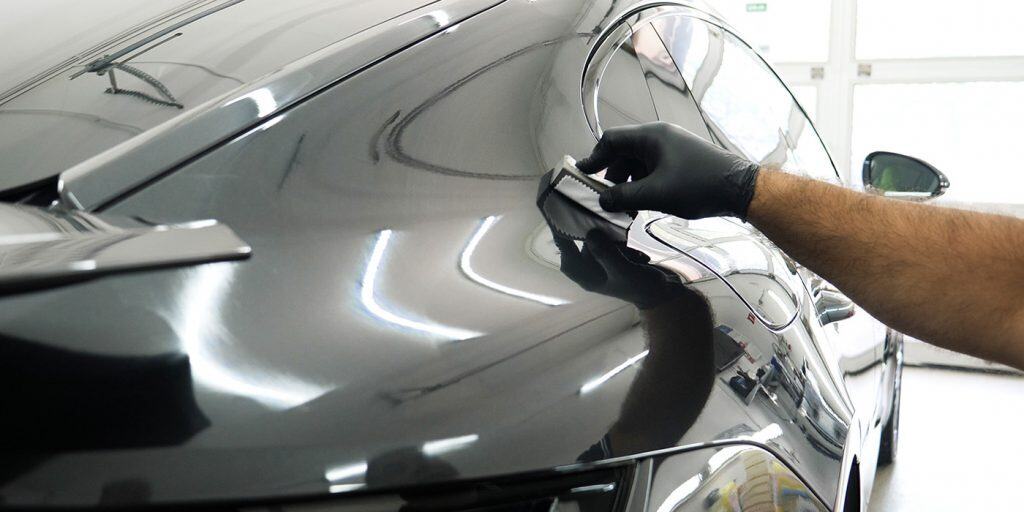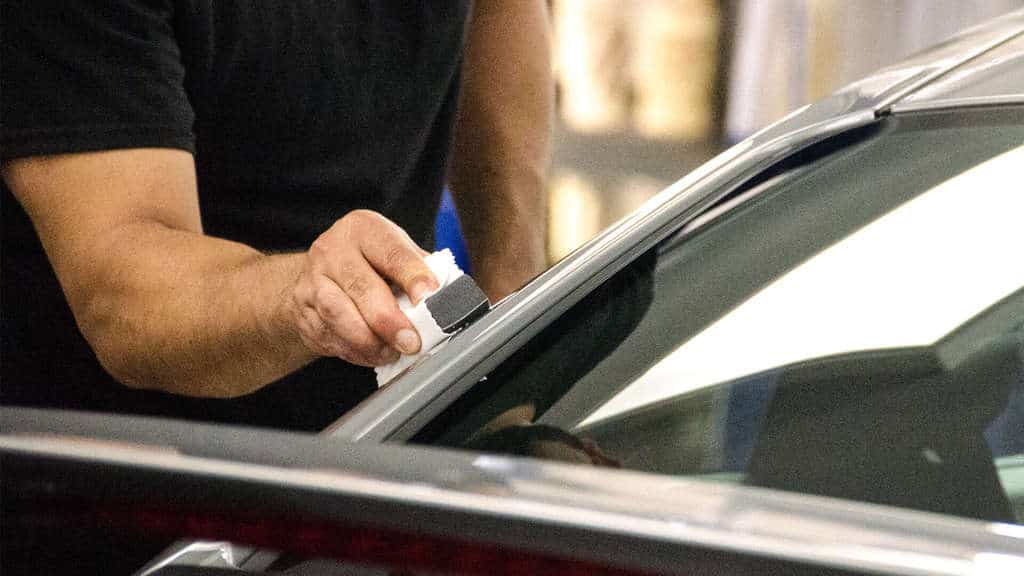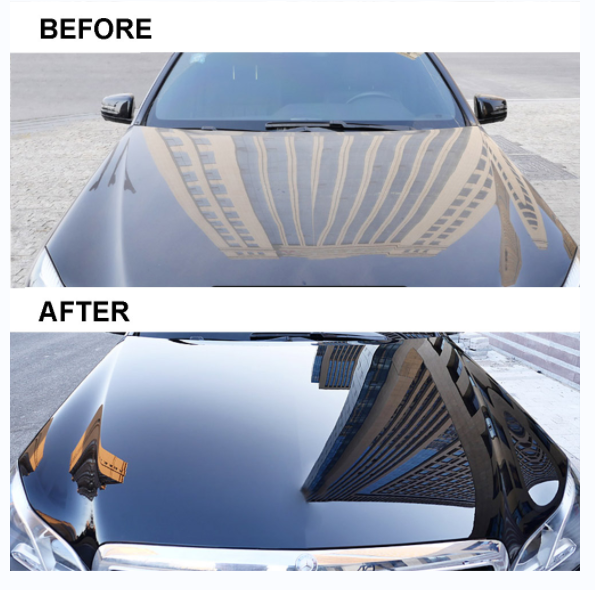Ceramic Coating vs. Typical Wax: Which Supplies Much Better Long-Term Security?
The discussion in between ceramic coatings and typical wax for automobile defense has amassed considerable focus amongst automobile fanatics and experts alike. Ceramic finishes flaunt superior durability and resistance to environmental elements, yet the intricacy of their application raises concerns about access and functionality.
Introduction of Ceramic Coating
Ceramic coating has actually gained considerable appeal amongst automotive fanatics and detailers alike due to its sophisticated protective top qualities. This ingenious modern technology is designed to develop a durable, hydrophobic shield over a lorry's paint surface, significantly enhancing its resistance to environmental pollutants such as dust, UV rays, and chemical discolorations. Unlike typical wax, which supplies a short-term layer of security, ceramic coatings bond at a molecular level with the paint, supplying resilient resilience-- typically prolonging beyond 2 years with proper maintenance.
The application process entails meticulous preparation of the vehicle's surface, consisting of cleaning and brightening to guarantee optimal bond. When applied, the finishing cures to create a durable layer that not only adds deepness and gloss to the paint but additionally streamlines upkeep. With its hydrophobic homes, ceramic layer permits water and dust to glide off more conveniently, reducing the frequency of cleans and minimizing the danger of swirl marks.
Moreover, ceramic layers are available in numerous formulations, enabling customers to select items tailored to their specific needs and preferences. On the whole, ceramic coating represents a significant development in paint security innovation, providing premium performance contrasted to traditional alternatives.
Overview of Conventional Wax
Commonly regarded as a staple in auto care, wax functions as a preferred selection for those seeking a simple approach to boost and safeguard their vehicle's paint - ceramic coating. Automotive wax typically consists of all-natural ingredients, such as carnauba, or artificial substances, made to develop a protective layer on the surface of the paint. This layer not just enhances the vehicle's gloss and shine but additionally offers a barrier versus ecological pollutants
The application of wax is typically straightforward, making it easily accessible for both experts and do it yourself lovers. It can be applied by hand or device, enabling for adaptability in the detailing process. When used, wax requires a treating period, after which it solidifies to create a protective shell. Wax is also understood for its capacity to repel water, advertising a beading impact that assists in the avoidance of water spots and rust.
However, while wax works for enhancing the aesthetic appeal of a car, it is crucial to keep in mind that the protection it offers may necessitate extra frequent reapplication contrasted to different products, such as ceramic coatings. In general, typical wax continues to be a preferred option for those prioritizing simplicity of usage and immediate visual enhancement.
Longevity and Durability Comparison
While both ceramic layers and traditional wax deal protective benefits for vehicle paint, their resilience and longevity differ dramatically. Traditional wax, generally made from all-natural carnauba or synthetic polymers, normally gives a protective layer that lasts roughly three to 6 months. This fairly short life expectancy demands routine reapplication to maintain optimal defense.
On the other hand, ceramic layers are engineered from advanced nanotechnology, developing a covalent bond with the paint surface area. This results in a robust, hydrophobic layer that can withstand for 2 to five years, relying on the item and environmental conditions. The premium sturdiness of ceramic finishes is attributed to their chemical structure, which offers enhanced resistance to scratches, UV rays, and oxidation.

Security Against Ecological Aspects
Securing a lorry's paint from environmental elements is browse around these guys vital for maintaining its appearance and value in time. Cars are regularly exposed to a variety of elements, including UV rays, bird droppings, tree sap, acid rain, and road gunk, all of which can compromise the honesty of the paintwork.
Ceramic finishes provide a durable protection against these environmental assailants. Unlike traditional wax, which can deteriorate quickly under UV exposure, ceramic layers create a long lasting, hydrophobic layer that stands up to the hazardous results of sunlight and ecological contaminants. This innovative modern technology produces a chemical bond with the vehicle's surface, offering exceptional security that lasts for many years, also in severe problems.
Typical wax, while easier to apply, usually requires frequent reapplication and provides restricted resistance to contaminants and UV rays. With time, it can damage down, leaving the paint prone to scrapes and oxidation. In contrast, ceramic finishings keep their protective high qualities longer, dramatically lowering the risk of paint damage and making sure that the lorry Recommended Reading maintains its aesthetic appeal. Therefore, ceramic coatings are increasingly identified as the premium choice for long-lasting security versus environmental variables.
Application and Maintenance Differences
The methods of application and subsequent maintenance for ceramic layers and typical wax differ dramatically, influencing the overall individual experience and effectiveness of each product. Ceramic coverings call for an even more complex application process, commonly involving surface prep work that consists of washing, decontaminating, and polishing the car. As soon as the surface area prepares, the ceramic layer is applied in a regulated atmosphere, usually requiring professional expertise to make sure appropriate treating and bonding to the paint.

While both products boost vehicle look, the longer-lasting protection provided by ceramic coatings may justify their first financial investment, in spite of the even more demanding application process. Alternatively, traditional wax remains a prominent selection for those looking for a less complex, albeit temporary, option.

Verdict
Finally, ceramic finishings show substantial benefits over typical wax in regards to sturdiness and environmental management. With a lifespan extending 2 to 5 years and exceptional resistance to UV rays, dust, and chemical spots, ceramic coatings use an extra reliable option for lasting car maintenance. The application process may need specialist knowledge, the web link resulting price financial savings and minimized regularity of reapplication emphasize the worth of ceramic finishes for those looking for optimal vehicle defense.
The discussion in between ceramic finishings and traditional wax for automobile security has actually garnered considerable attention among automobile lovers and specialists alike. Unlike standard wax, which supplies a momentary layer of protection, ceramic coverings bond at a molecular degree with the paint, using resilient sturdiness-- usually prolonging past two years with proper upkeep.
While both ceramic finishes and traditional wax offer safety benefits for automotive paint, their durability and long life vary considerably. For vehicle fanatics looking for long-lasting protection, ceramic finishes offer a compelling benefit over conventional wax items.
In conclusion, ceramic layers show considerable advantages over conventional wax in terms of resilience and environmental defense.
Comments on “Ceramic Coating vs Traditional Wax: Which Offers Better Protection?”